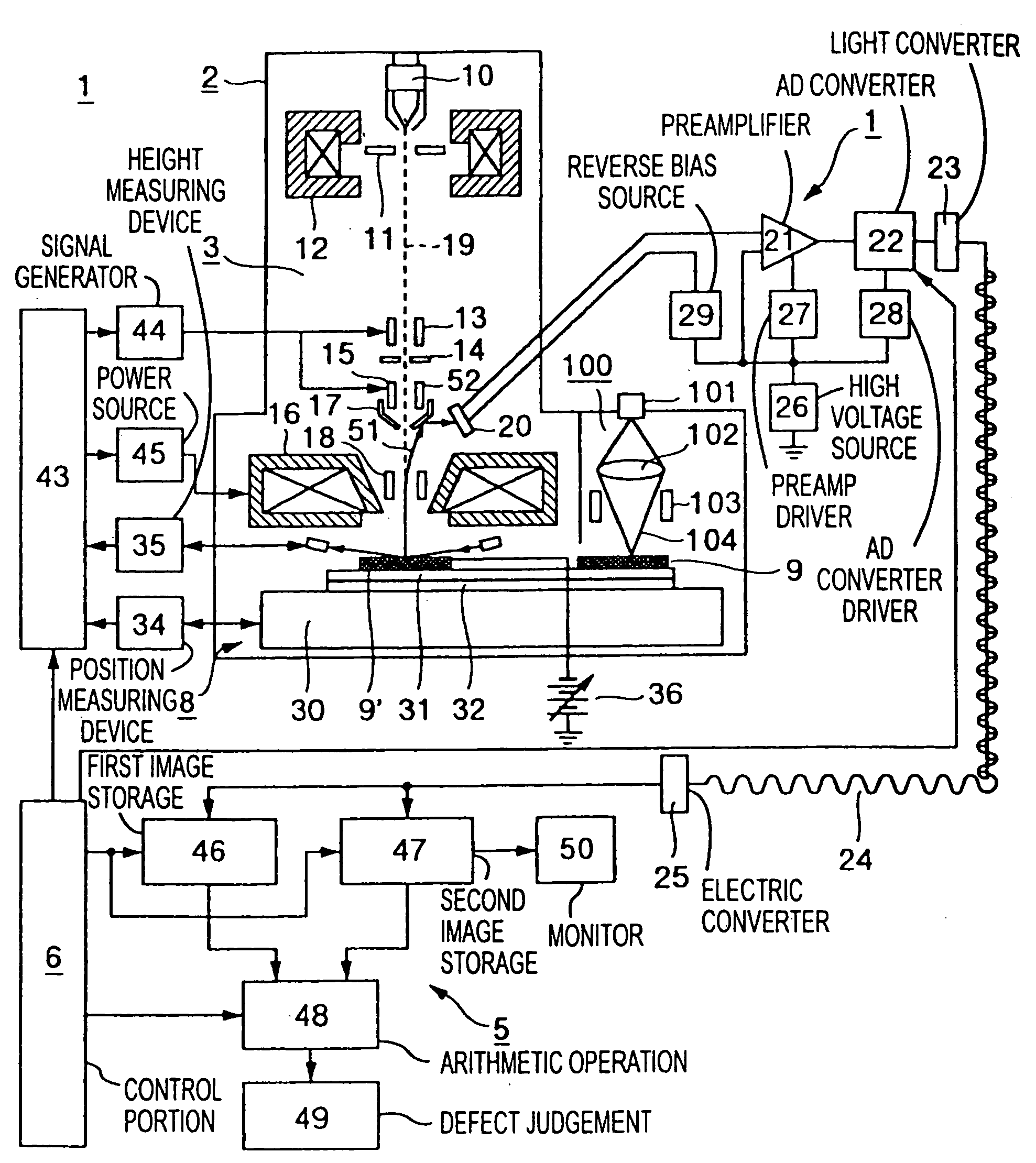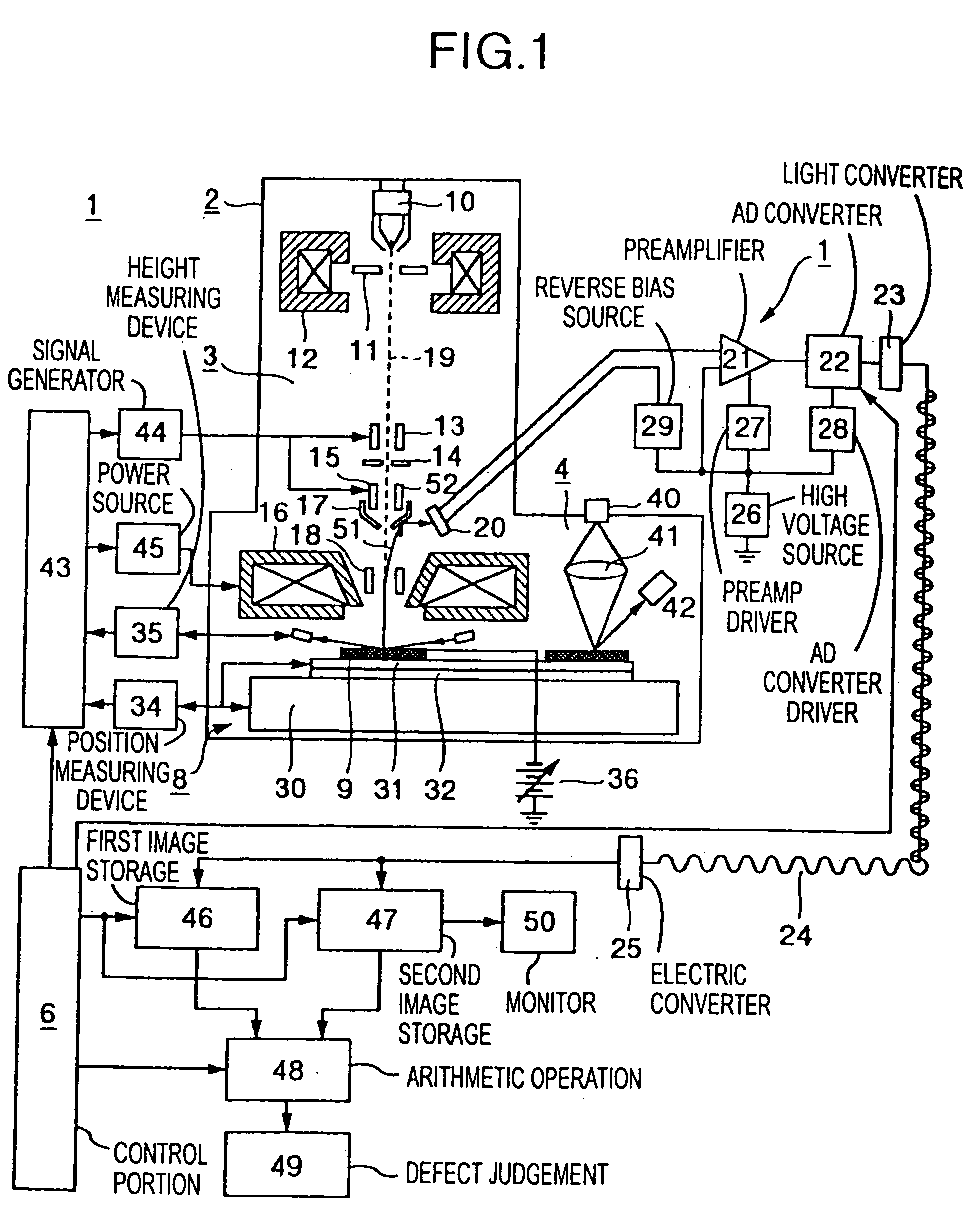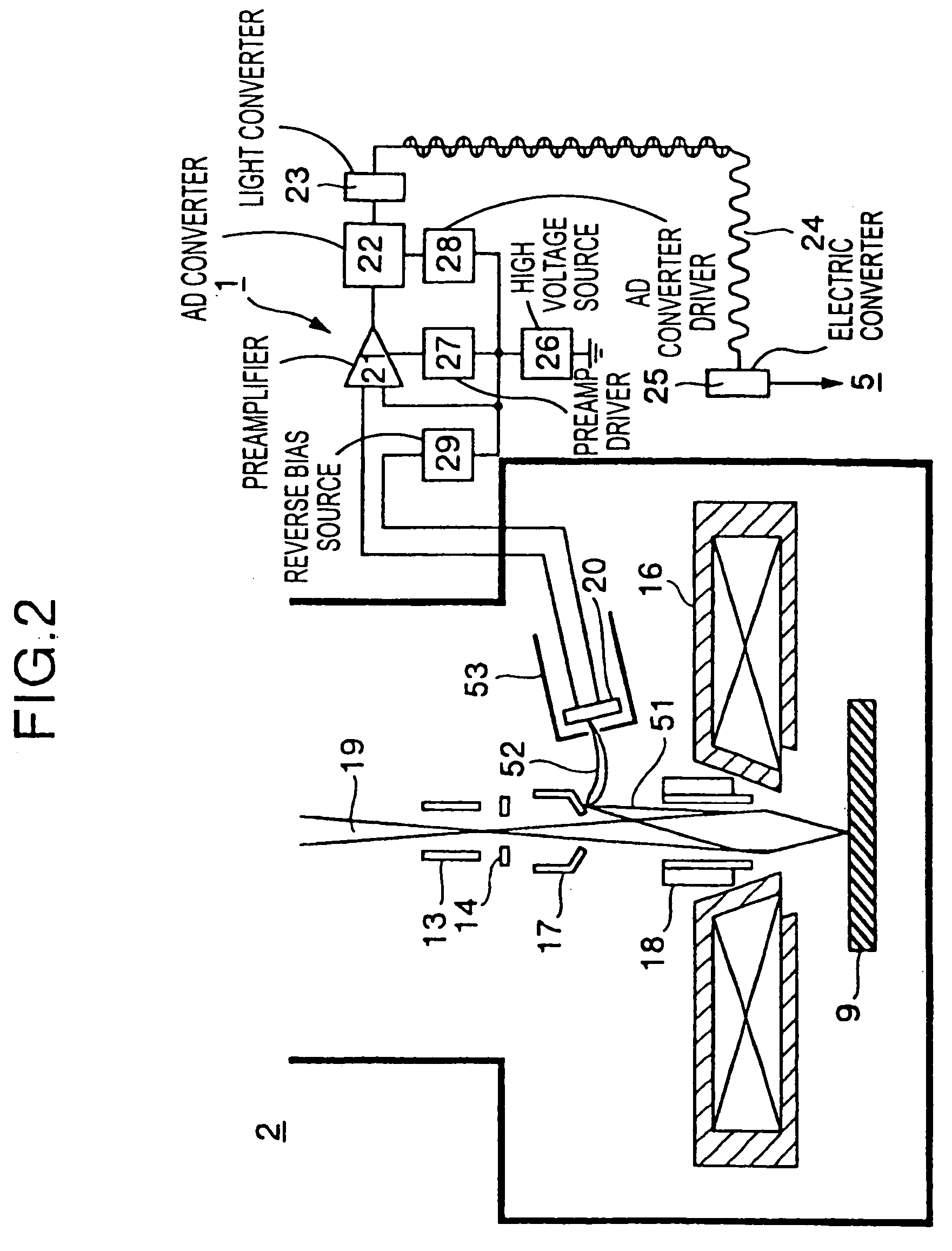Method and apparatus for inspecting integrated circuit pattern
a technology of integrated circuit and pattern, which is applied in the direction of individual semiconductor device testing, instruments, nuclear engineering, etc., can solve the problems of etching remainder or incomplete-open failure in a micro conductor hole smaller than the resolution of an optical system, the defect generated in the wiring-pattern stepped bottom portion cannot be detected, and the defect has a light-transmissible silicon oxide film or a photoresist material on its surface that cannot be detected, etc., to achieve the effect of elimination
- Summary
- Abstract
- Description
- Claims
- Application Information
AI Technical Summary
Benefits of technology
Problems solved by technology
Method used
Image
Examples
embodiment 1
[0053]FIG. 1 shows the configuration of a circuit pattern inspection apparatus 1 according to a first embodiment of the present invention. The circuit pattern inspection apparatus 1 has an inspection chamber 2 to be evacuated, and a sub chamber (not shown in this embodiment) for carrying a sample substrate 9 into the inspection chamber 2. The sub chamber is configured so as to be able to be evacuated independently of the inspection chamber 2. The circuit pattern inspection apparatus 1 is constituted by a control portion 6, an image processing portion 5 in addition to the inspection chamber 2 and the sub chamber. The inside of the inspection chamber 2 is roughly constituted by an electronic optical system 3, a secondary electron detection portion 7, a sample chamber 8, and an optical microscope portion 4. The electronic optical system 3 has an electron gun 10, an electron beam extracting electrode 11, a condenser lens 12, a blanking deflector 13, a scanning deflector 15, an aperture ...
embodiment 2
[0084] In this embodiment, there will be described an applied example in which a semiconductor wafer is inspected by using the circuit pattern inspection apparatus 1 and method according to the present invention. FIG. 6 shows a process for producing a semiconductor device. As shown in FIG. 6, a large number of pattern forming processes are repeated in the semiconductor device. The pattern forming process is roughly constituted by the steps of deposition, application of a light-sensitive resist, exposure, development, etching, resist removal and cleaning. If the production condition for processing is not optimized in each step, a circuit pattern of the semiconductor device formed on the substrate is not formed normally. FIGS. 7(a) and 7(b) schematically show a circuit pattern formed on a semiconductor wafer in a production process. FIG. 7(a) shows a circuit pattern processed normally, and FIG. 7(b) shows a circuit pattern in which a failure in processing occurs. When, for example, ab...
embodiment 3
[0087] The third embodiment of the present invention as to the configuration of the inspection apparatus is configured in the same manner as in the first embodiment except that an objective lens 16 in the electronic optical system 3 is disposed above the secondary electron detector 20 as shown in FIG. 8. FIG. 8 shows an enlarged partial view of the inside of the inspection chamber 2 in the circuit pattern inspection apparatus. The operation based on the configuration of the third embodiment will be described below. An electron beam 19 is irradiated onto an inspection-subject substrate 9 in the same method as in the first embodiment. A negative high voltage is applied to the inspection-subject substrate 9 in the same manner as in the first embodiment. In this embodiment, the negative voltage for retarding primary electrons applied to the inspection-subject substrate 9 is selected to be −3.5 keV. By electron beam irradiation, secondary electrons 51 are generated from a surface of the ...
PUM
 Login to View More
Login to View More Abstract
Description
Claims
Application Information
 Login to View More
Login to View More - R&D
- Intellectual Property
- Life Sciences
- Materials
- Tech Scout
- Unparalleled Data Quality
- Higher Quality Content
- 60% Fewer Hallucinations
Browse by: Latest US Patents, China's latest patents, Technical Efficacy Thesaurus, Application Domain, Technology Topic, Popular Technical Reports.
© 2025 PatSnap. All rights reserved.Legal|Privacy policy|Modern Slavery Act Transparency Statement|Sitemap|About US| Contact US: help@patsnap.com



